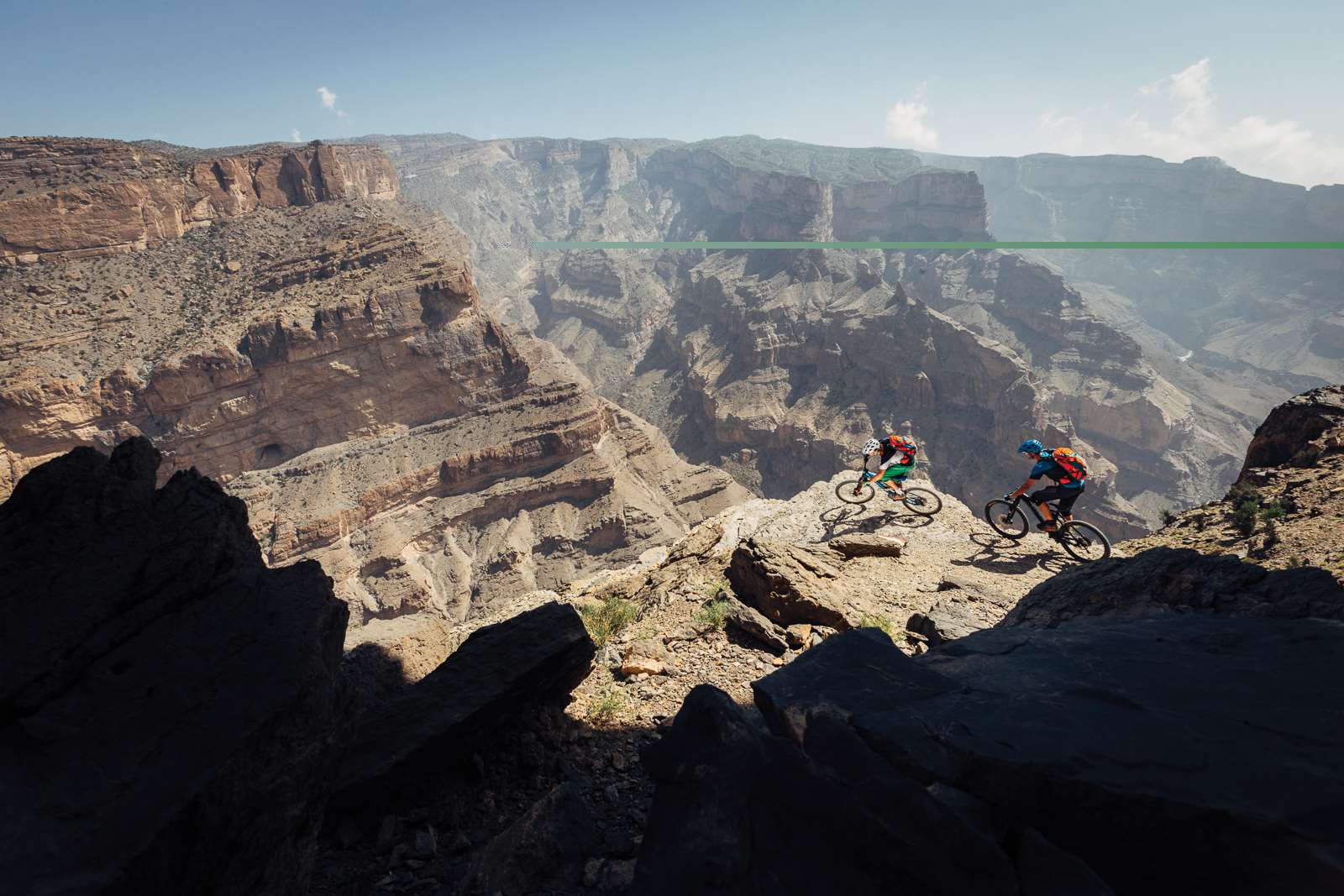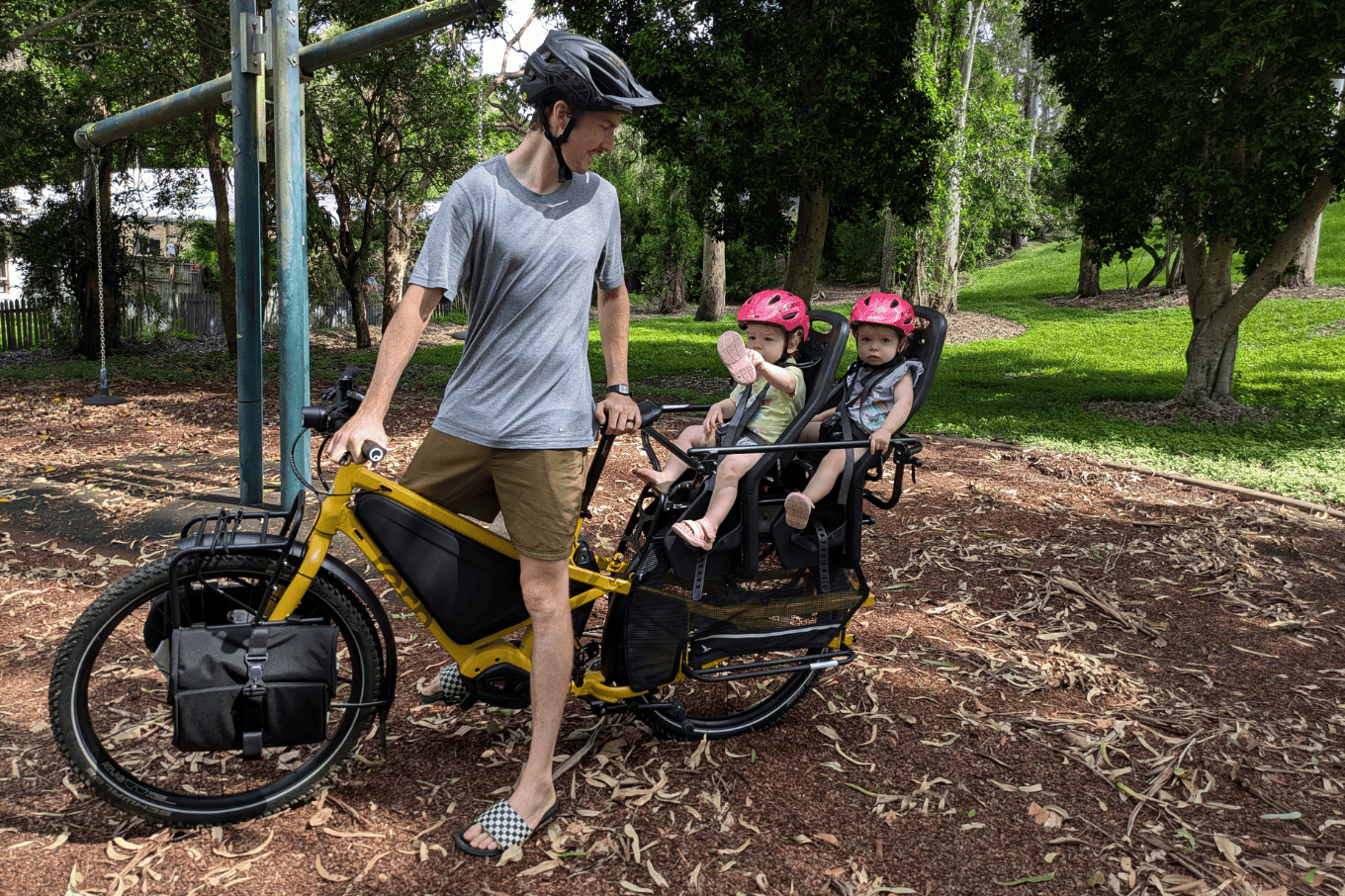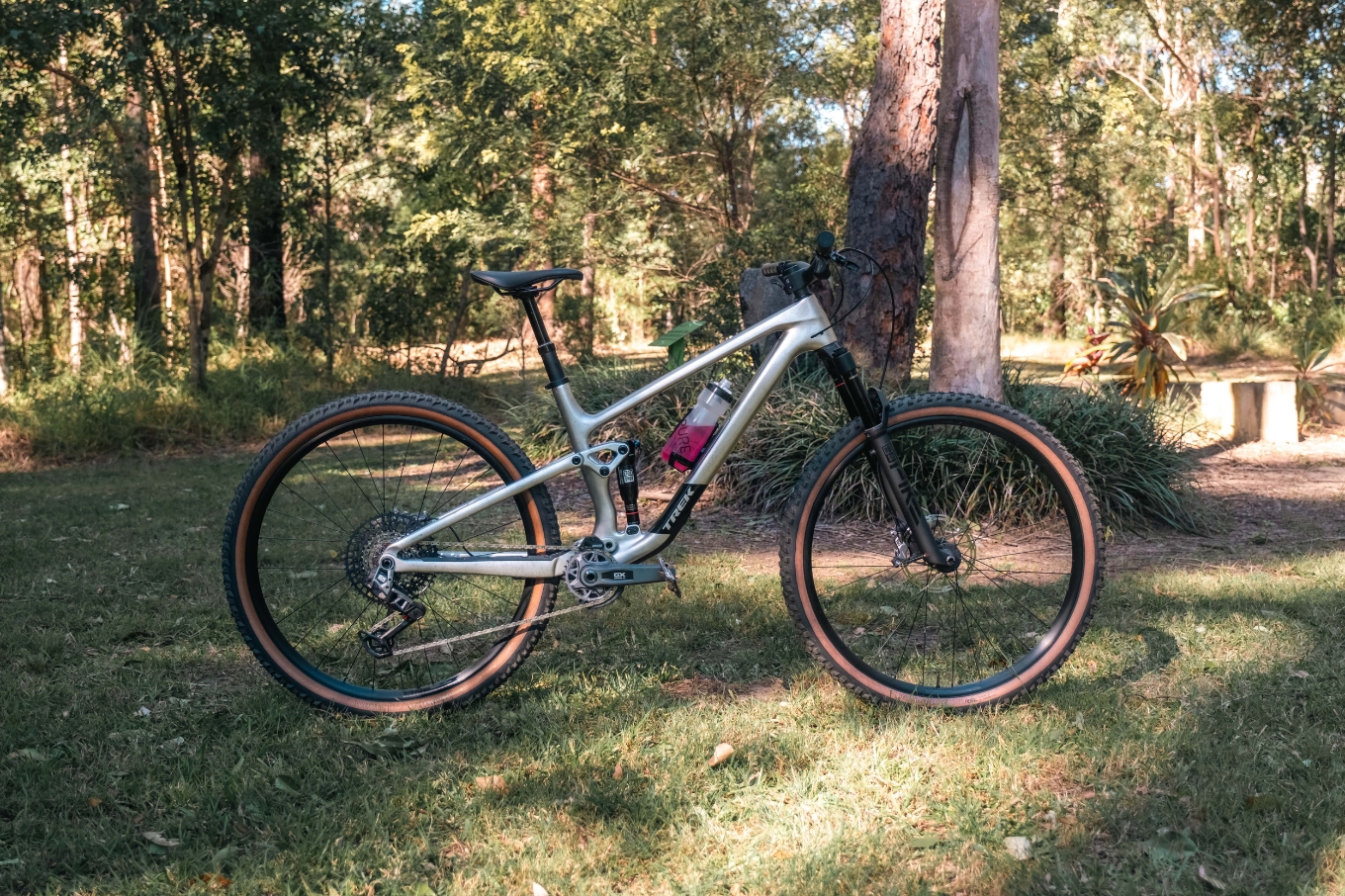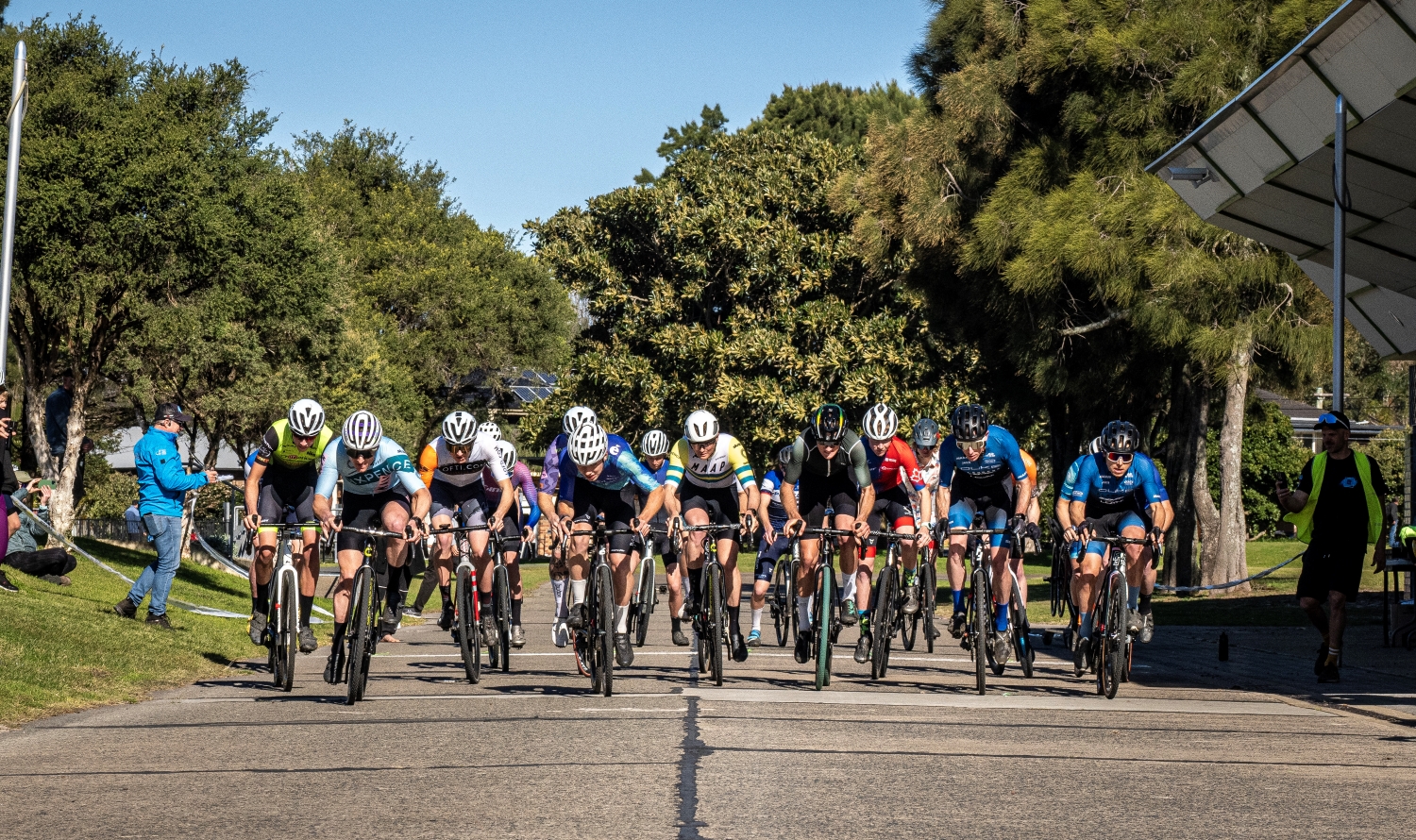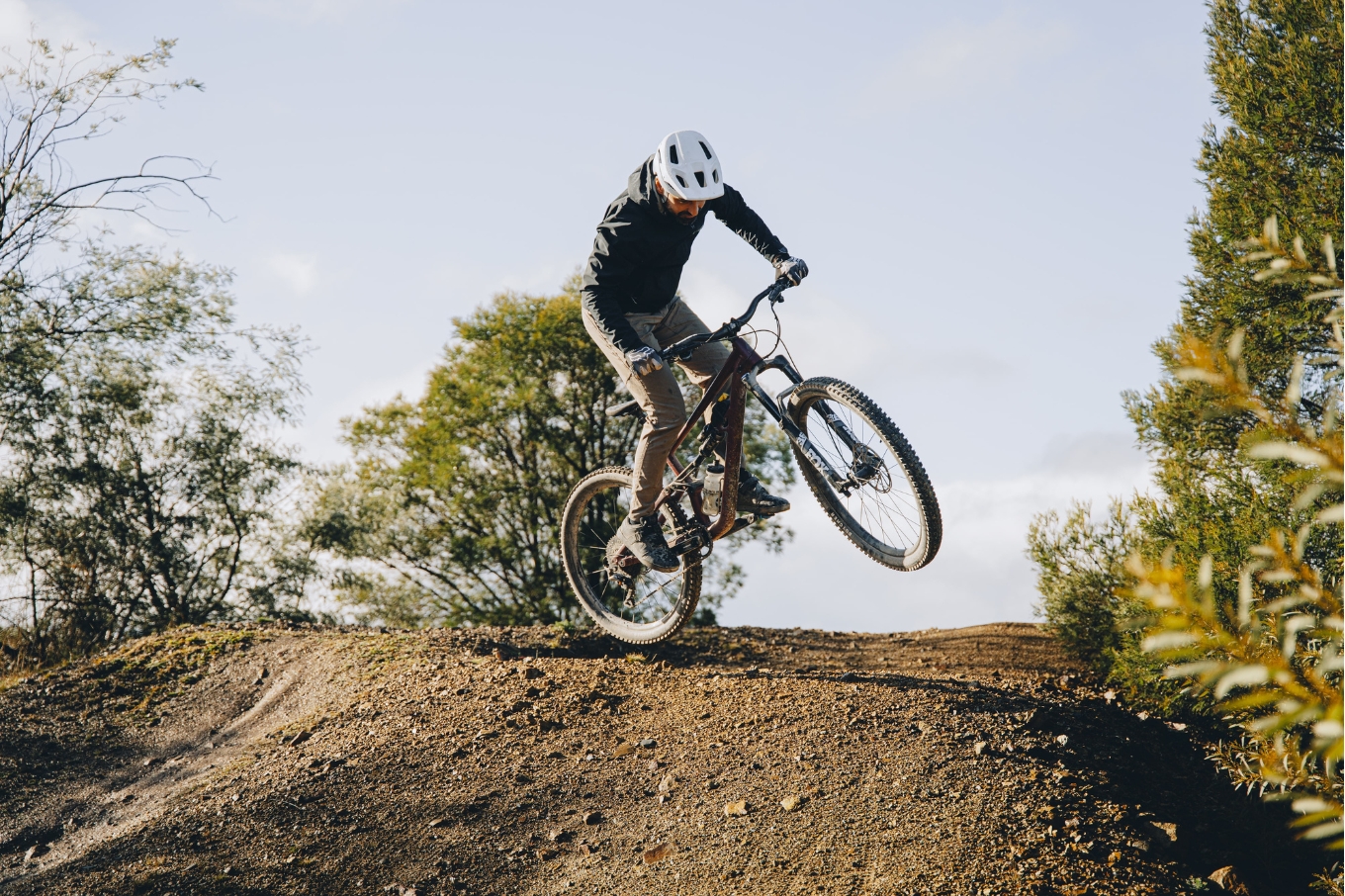The last bastion of Arabia
Gerhard Czerner and Martin Bissig travel to Oman in search of trails and ticking off another stop on their world map.
Everybody has one inside. Your own map of the world. There are countries we know because we have been there. In some we live or have lived. Some are just around the corner and we visit them for regular short trips. Then there are those we’ve only been told about from friends, via the news or through books. And then there are those that we haven’t heard of yet, ones that we have no connection to, maybe haven’t even heard their names and if so we surely wouldn’t know where to find them. We often call those places white spots on the map. For me one of these spots was Oman until the beginning of this year.
I became aware of my ignorance on a flight to southern France in March. I was looking through the pages of the airline’s on-board magazine and read an article about the safest land for travelling in Arabia, Oman: coasts, beautiful beaches, deserts and mountains up to 3000 metres high. That pretty much sums up the article. I became curious. You should be able to mountain bike wherever there are high mountains. Even better if the mountains are close to the sea because then you have some variety. So I began my research online, bought a travel guide and became enthralled by the stories of fantastically rich caravan cities, incense harbours and the legends surrounding Sinbad the sailor, who was born in Oman.
The inner map of my friend Bernhard didn’t have that white of a spot in southern Arabia. Oman had been on his travel wish list. Perfect, I had found a travel companion. The end of October seemed like a good time to go. The mountain biking season at home was coming to a close and daily temperatures of the Omani summer of up to 48° start to fall by that time. A flight was found quickly. Oman Air offers flights from Germany nonstop to the capital of Muscat. You’re looking at about 18 hours flying from the East Coast of Australia, with a stop over.
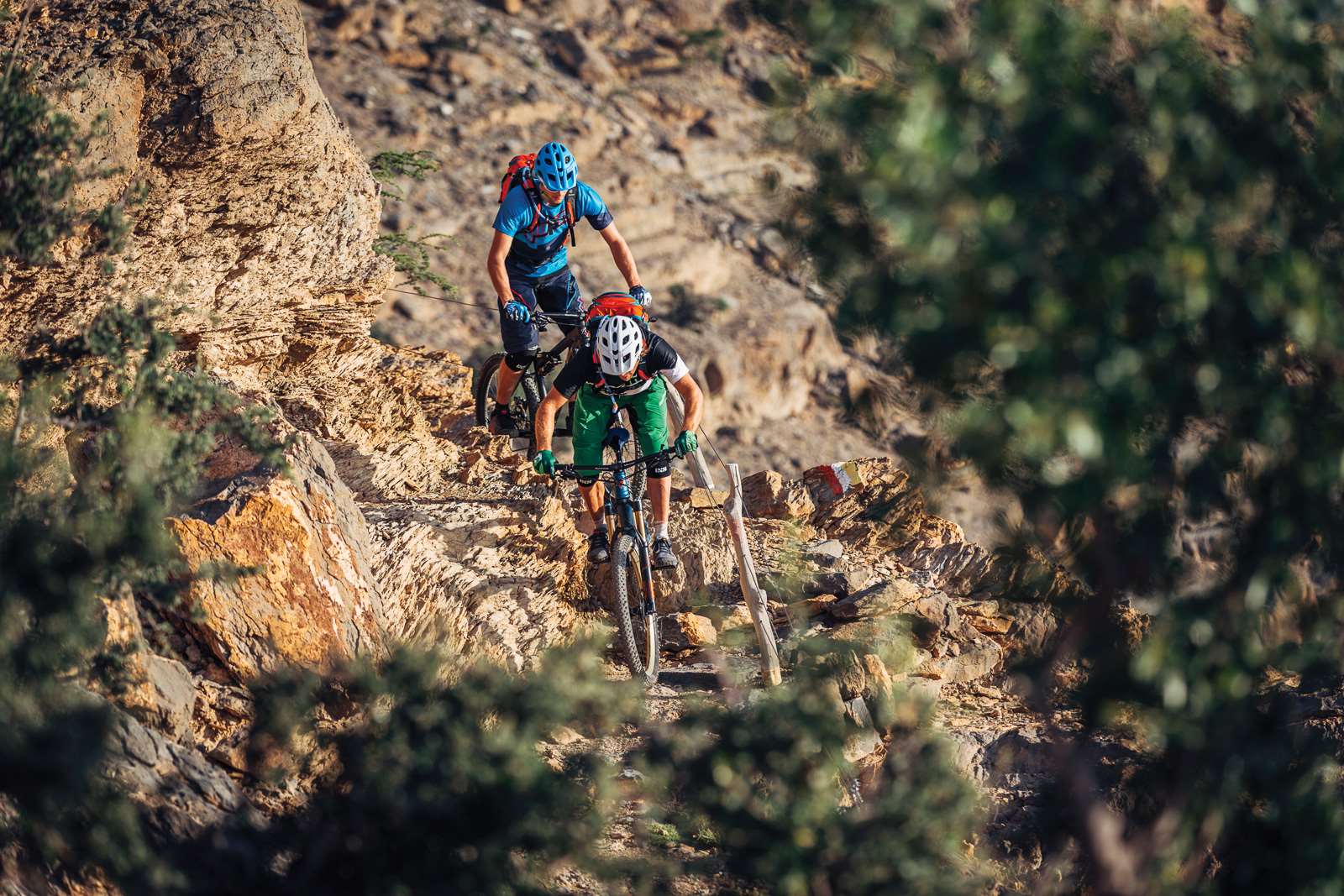 Out of the frying pan and into the fryer.
Out of the frying pan and into the fryer.
It’s so incredibly hot our breath stalls as we exit the airport building to pick up our used SUV. Who said anything about bearable temperatures? The display in the car says 42 degrees. We break a sweat just loading the bikes. We’re so glad our first stop is about 2000 metres above sea level. We hope it’s cooler there. We start our trip well in air-conditioned comfort and stocked up on supplies and lots of water. The perfectly built highway leads us to a yellow and red hilly landscape. Doesn’t it have to go uphill anytime soon? We’ve been driving on a plain for hours. Finally the mountains begin to look higher and the road changes. The asphalt soon turns into a bumpy gravel road that leads up the mountain. The flat-topped mountains surrounding us are cast in a fascinating light as the sun sets. We reach the bungalow complex in the dark of the night, check in and are happy about the cool evening air.
After assembling our bikes we set off to explore some paths on the Djebel Shams plateau. The mountain range is named after the highest mountain in Arabia which rises 3005 metres into the sky right across from our accommodation. In between lies a natural spectacle that couldn’t be more impressive: the “Wadi an Nakhur,“ the Grand Canyon of Oman, cuts off the direct path to the peak of the highest mountain with its 1100 metres of vertically dropping walls. Only about 400 metres separate our accommodation from the edge of the canyon. The depth almost sucks us in. We can see a small path form where we stand about 150 metres below us. It follows along the edge of the canyon like a balcony. This must be it. The so-called “Balcony Walk” the most famous trekking route in Oman.

Even here it gets so hot around noon that we drive back to the resort to spend some time at the pool and make plans. The highest peak of the country had already grabbed our attention when we were still back home. So in the afternoon we check out the beginning of the ascent. The track up and down is supposed to take about ten hours. We wouldn’t be faster on bike than on foot since the extremely rocky terrain would only allow us to actually ride a few metres. We’d have to push and carry the remaining time. So the “Balcony Walk” seems more appealing to us and we decide to tackle it the next morning. We’ll save the peak for later.
Traversing the balcony
We take off before sunrise to escape the worst heat. Some tourists have set up camp at the edge of the canyon. But they’re still all sleeping. A few low stone structures become visible and with them some curious goats that start following us. A coloured mark shows the way to the entrance to the path. We get down to business right away. A few steps down through tight, man-high rocks and we’re in another world. The sun is just pushing over Djebel Shams as we roll along the first sections of trail on the canyon’s edge. The vertical wall to our left keeps getting higher until it reaches almost 150 metres. On our right we have 800 metres to the bottom of the canyon. Often the width from the path to its edge isn’t even a body’s length. So just don’t crash. That would mean the end here. But the path is surprisingly good to ride over long sections. We roll slightly downhill into the huge monster of a gorge. Soon we are encompassed by vertical walls. We can only take in the amazing views during our breaks since the path requires 100% of our attention. Five huge bearded vultures circle above our heads expectantly as we take a short brake to catch our breath from the now very demanding route.

The path into the canyon leads to a dead end where the wall falls 1000 metres into a never ending depth. It’s incredible that there are some stony remains of a house here. The path continues a bit past a small pool at a dried out waterfall. This was surely the reason for the inhabitants to decide to live here. Water is scarce on the entire mountain. The sun is beating down with unrelenting force. My water supply has been used up a while ago and I don’t feel good. Damn, that’s not something I need right now. Bernhard pulls an orange out of his backpack, which saves me. We head back after a few minutes rest in the shade. We have to push our bikes a bit more. What we were able to ride down hill with an incredible amount of concentration is only possible with our bikes on our shoulders going uphill. After about an hour we’re back at the beginning of the entrance of the “Balcony Walk” and we’re deeply impressed by what we experienced. Kids come running our way and want to ride our bikes. We take the welcome break as quite a bit of a commotion stirs up. Shouting, many smiling children’s faces, worried mothers, barking dogs, goats jumping around. Just like at a fair.

The aquapolypse
Huge clouds build up at the resort. The managers assure us that it will rain today. The first rain in months. Just as we got here! We’re thinking: “That can’t be true!” The weather forecast for the next days doesn’t look too promising, either. So we decide not to take on the ten-hour tour up to the peak of Djebel Shams tomorrow. Just the right decision as we find out later.
We pack our stuff in the Jeep, leave the resort and say good bye to the mountain. The sky keeps getting darker and darker, the road is wet and covered in runlets. It seems it had rained here already. There is a crowd of cars at a look out point. We stop and immediately see why the Omani are waving around their smartphones so excitedly. Huge waterfalls are streaming down the adjacent rock wall. It was bone dry just yesterday. We feel like we’re dreaming. Desert state? This looks like Iceland.
At first we’re excited about nature’s display. That changes fast as we reach the valley floor. Torrents are falling from the sky, we can’t see a thing from the car. We feel as if the universal flood was coming down on us. Small landslides and mud flows are trying to take over the road. We try to make our way through the storm little by little. The road is almost completely under water. It keeps rumbling all around us. We just want to get out of this aquatic inferno.
The terrifying scene ends after about two hours. The clouds clear, the rain fades and the surroundings are completely different. Waterfalls roar into the valley from all the mountain sides. The tiny creeks by the side of the road have turned into tearing brown rapids. We make our way across several mudslides to a completely flooded petrol station. Roads have become impassable over a few hundred metres because flash floods are raging over them. Hundreds of people are standing in front of the water masses, unbelievingly. We flee the mountains via a still passable route and find a hotel at the side of the road. We find out the next day that six people died in the floods, several houses were washed away, many roads were buried. We’re more than glad we’re not in the mountains anymore.
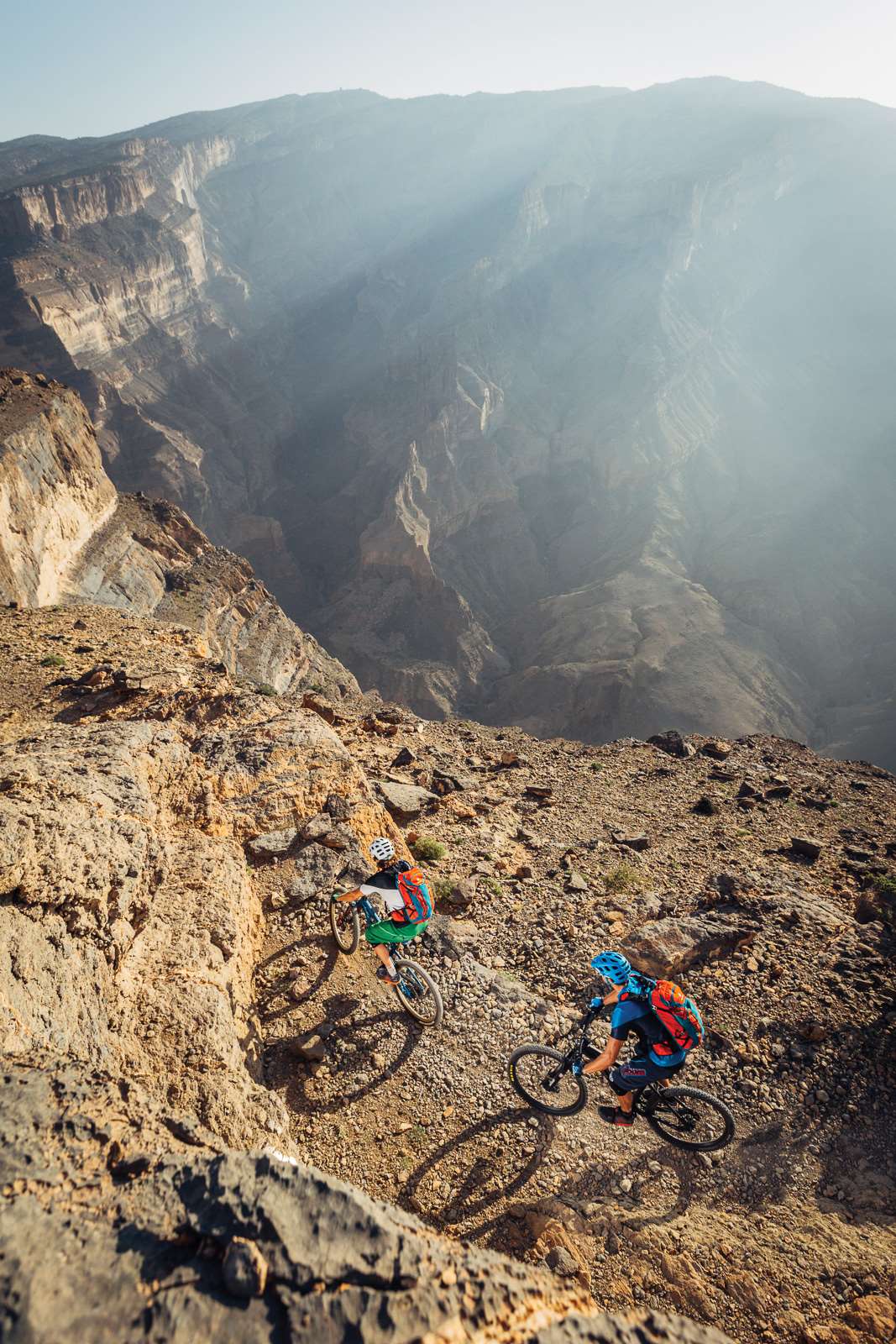
To the desert we flee
We’ve had enough of water and decide to head to the desert. It’s only a six-hour drive to the beginning of the small, 15 000 square kilometre inland desert “Ramlat al-Wahiba“.
We visit the town of Nizwa on our way. It’s one of the most worthwhile places to see when visiting Oman. The radiant blue and golden dome of the Sultan-Qaboos-Mosque and the giant defence tower of the neighbouring fortress can be seen from afar above the tree-tops of the palms and dictate the silhouette of this oasis rich in history. Nizwa was a flourishing centre of religion, philosophy and handicrafts in the 17th century. Even today many hand made things, especially ceramics, are offered at the vibrant Souq, the big market. The well-preserved adobe buildings are a sign of the wealth of the city. A group of men in their traditional gowns, the “Dishdaschas,” come up to us in high spirits and want to have their pictures taken. They proudly stand next to us as we have to shake everyone’s hand and answer many questions about our bikes and the reason for our trip to Oman.
The sky turns dark again as we continue our travels. But it looks different somehow. The sun is pale and yellowish behind the dark sky in front of us. Since I have travelled in the desert a few times I realise quickly what’s in the air: sand! And in fact we drive straight into a sand storm shortly afterwards. This just can’t be real! We flee the floods and land in the arms of whirling sand! And again we make our way little by little towards Al-Hawiyah, the oasis at the entrance of “Ramlat al-Wahiba.”
Our idea is to camp in the dunes and try to catch a few runs with our bikes the next day. A couple of Jeeps are standing at the end of the asphalt road and the beginning of the sand road to head into the desert despite the bad visibility. This is a huge playground for adults. They’re all racing across the dunes with their monstrous SUVs or sand buggies. The sand in the air is beginning to clear and we’re confident enough to make our way into the desert via the sand road. We let out some air from the tyres before we leave. The resulting larger contact area of the tyres effectively prevents them from sinking into the sand.
We set up our night camp on top of an exalted dune. The starry sky is simply beyond words. It’s almost surreal. There is no light pollution here so the stars as well as the Milky Way appear much brighter than we’re used to at home.
Two beduins with a camel stop by the next day. They own a desert camp not far from ours. They were worried if we were ok and if we’d made it through the sand storm fine. Not many people camp in the desert in tents without being escorted by a local guide. They invite us to their camp for some coffee. We gladly accept and follow them to their housing since our efforts in riding our bikes in the morning didn’t exactly go as planned. Coffee, which is called Qahwa here, has a long tradition and is almost something like an Arabian magic potion. It’s the prime example for Arabian hospitality. It brings together people from different cultures in a wonderful way. Everybody has their own special secret on how to prepare it. It’s not just about a few coffee beans. Additional spices like cardamom, rose water and even frankincense create an individual taste experience. Dates are served with coffee here and everywhere else in the country. These were the most important trading goods back in the day and they’re still an important food.

After quite a while we rise from the floor, no chairs and tables here, and say good bye to the hospitable beduins. We want to wash the sand out of our pores. We’re not looking for a shower in a hotel, we decide to take a 40 km long ride to the “Wadi Bani Khalid.“ The wadi, which is what the course of a river is called here, is considered one of the most beautiful and lushest wadis in Oman with its pools framed by palm trees and the turquoise shimmering water. These are truly moments in paradise. The water is almost too warm to cool off but we can lounge around in it forever without getting cold. Hundreds of Omanis hang out here, have picnics, make music on their bongos or guitars, splash around and are curious about our bikes once again. The way in which we are greeted with friendliness and interest by the native people is unprecedented.
Our trip continues towards the coast the next day. The harbour city Sur is close to the eastern extension of the Arabian peninsula and is said to be the city in which the legendary Sinbad was possibly born along with the city of Sohar. That’s not the only reason we want to visit the city by the lagoon built of completely white houses. We want to see the Dhaus, the traditional wooden boats, that you can only find here. The boats used for fishing are made without any drawn plans, simply by visual judgment and the tradesmen talking to each other. Even though the main work done today in the dockyard is repairing the boats and not manufacturing them anymore they are everywhere in the harbour. The fishermen return to the harbour early in the morning and offer their catch for sale. You can buy everything fresh here from tuna to rays to sharks. We ride to a small hill above the city. A tower made from clay waits for us. We enjoy the view over the entire lagoon from here and the cityscape is dominated by minarets and mosques. The white houses put on an artistic display in contrast to the blue ocean.

Making tracks to Muscat
After a week we follow the coastal road back to Muscat, the capital of Oman. Impressive buildings like the fortress Mirani and Jalali, which make up the ends of the city’s wall, dictate the scene of the old town of Muscat. The tiny coastal town of the 1960s has grown into a metropolis a million strong with dizzying speed in the wake of the takeover of Sultan Qaboos in the 70s. Today almost one third of the country’s population live here. So there is a lot going in as we stroll through the alleys of the old town on our last day. We are accompanied by the smell of burnt incense with each step we take, just like everywhere in Oman. We stand in line with men and women in long gowns in a small bakery to buy some Baklava. And how else could it be but to have each of these little sweet pastries taste a bit different each time. Sometimes they taste a bit like frankincense, sometimes more like rose water, cardamom or other exotic spices. Maybe we should suggest this to our baker at home?
My white spot on the map took on some shades in that week. Coloured by lasting impressions of spectacular displays of nature, sandstorms and rain floods, with exotic smells and tastes, with friendly faces and laughing, open-hearted people. We still have to process much of what we’ve experienced. But one thing is for sure: One week is much too short to fully comprehend the multiplicity of this country with its centuries-old history.
THE LAST BASTION OF ARABIA
Population: 3.632 million
Approximate flight costs from Australia: About $1500 return
Travel guide: Reise Know How, OMAN
Bike shop: omanbicycle.com
Information about mountain biking in Oman: bikeoman.com

